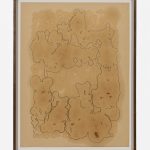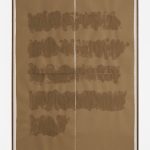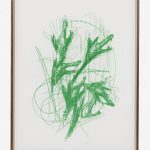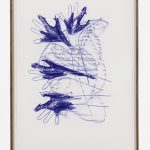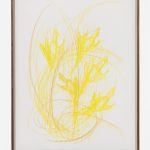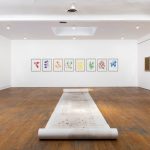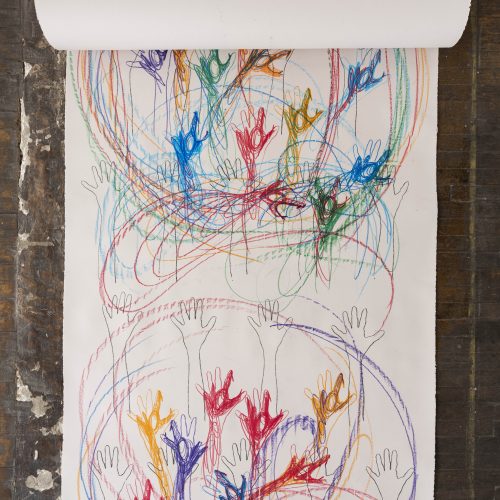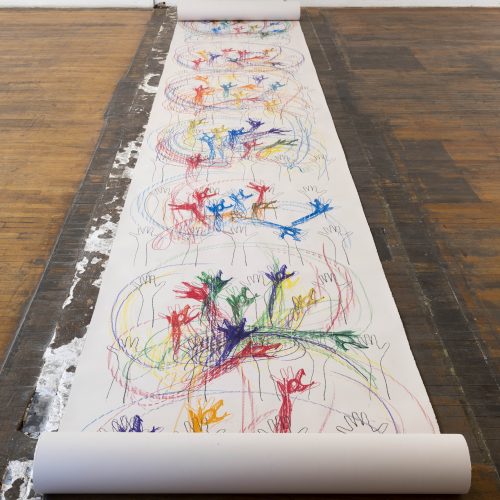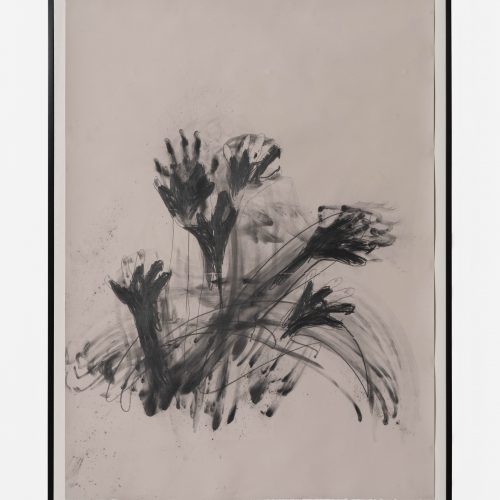Glove Hand Dog: Commonwealth and Council
Film Process:
The film making process has felt familiar and a natural extension and continuation of my practice. The act of walking and of searching within the city, the act of taking pictures with my phone and recoding voice memos of incoming ideas and thoughts, and generally of taking notice of moments, have constructed the ideas of the work.
Walking as an art practice:
By walking, I am able to feel in my body, and to be embodied. Walking allows me to come into a mental space that often feels like a walking between different dimensional planes. There is an opening in both my imagination and in my scope of vision that happen through a long walk. Time also comes into perspective, because walking is slow, and so distances are at the scale of the body.
Digestion:
In walking, I feel that I digest the city, understanding it’s energy as a process of taking it in and processing it slowly. The concept for the work grows from the fragmented moments I encounter while moving through. This conversation with the land, and with the digestion of it’s energy by walking daily, are conscious uses within our shared public space.
The Haptic:
There is the direct action of touching a surface. Sometimes, there is a sort-of imagined touching of the landscape, that has been an important part of this processing. The sensorial experience and the skins surface along with the scale of my hand within the landscape, are part of how I perceive my body within the city. The pandemic has created a situation in which I began to feel a deep sadness because I could not touch the surfaces that I was so drawn to visually and viscerally. I began wearing gloves, using my feet to press the crosswalk buttons, and made an effort not to lean or have any contact with any element in the landscape. I can only describe the effect as a sort of sensorial deprivation.
Shoes:
My shoes are one of my most basic tools and materials in my practice. My gaze would often shift to the ground and it’s surface and focus on all the marks on it. I would walk in my shoes and connect the gum drops, as if moving through a constellation over the celestial plain of the sidewalk. The soles of my shoes can touch the city directly, pick it up, move its particles along with me. My shoes, that I would remove immediately when entering my home. My shoes, that somehow now carry a feeling of being infected.
Drawing as an impulse:
The film was underway, we had locked picture, and I continued to walk as part of the process of living and making work. The need to wear gloves created a strong desire to find an alternate pathway to connect the walking routes with touch. Drawing felt like a release of this contained desire, and the searching that usually happens in walking, passed into the haptic within the privacy and isolation of my domestic space. I first made a drawing of my walking route, using pictures from my phone I had been taking, of my shadow under the different streetlights and surfaces along my walking circuit. The composition for the map was a sort of automatic drawing, where the drawing grew out of my habitual movements over streets, turns, and directional positions along the way. The first drawing was Wabash St. to Soto, then to Mission Rd., and then onto Zonal. These directions grew the composition of the drawing, and determined the size and shape of the map. I used black crayons because the crayon, the hand and the floor seemed to bring me back to one of my earliest ways of drawing from childhood and my unconscious desires- crayons on the floor in the home.
Dog in Graphite:
There is a dog behind a fence that I repeatedly visit in my walks, and that shaped the ideas in the film, Last Light. The fence, as a sort of barrier or surface, that allowed the positioning between me and the dog, creates a tension. This tension came into the action of drawing. I would begin each drawing by placing my hand on the paper and tracing my hand. I would then search with my mark-making for the dog, allowing the dog to reveal itself over and over again.
I began to draw with an immediacy and need to use graphite. Graphite became a substitute for the chain link fence. Able to touch the surfaces and materials with my skin and fingers, I would search and remember the dogs movements I had observed over my many visits. These drawings let me process the city, and brought that moment into my private space. These first drawings of maps, and of the graphite gloved hand dog, were a wanting of public space within private space. They came out of a need for touching, and a desire for a direct contact with the city around me.
Through my drawings, I embodied the dog. In Dog Map, the composition is made by the positioning and tracing of my hand, imagining myself as the dog, moving through the my walking route.
Dog Florals:
I resist the surrender of our public space by walking the sidewalks daily, even with a curfew. My anxiety resulting from the action and idea of shelter in place propelled my need to draw continuously.
The dog florals are a sort of flower arrangement. Found in the home, flower arrangements remind me of our want for control over nature, something that repeatedly shows us we have no control over.
The earlier drawings of a gloved hand that searches for the tension of the dog began to give way to a dog that felt more like a familiar route. A symbol of a dog, much like a persons signature represents them yet is not their writing.
In making these drawings, I think about the perceived control we have within our private space, and how that control is positioned against the use of the public space. The public space of the sidewalk, with its weeds jetting out of cracks in the concrete, is perceived as a sort of wilderness against the flower arrangement of the home.
The gloved hand dog drawings have shifted through the act of drawing from flower arrangement into a sort-of automatic signature. I think of my body and the mark of my hand, confined within the bounds of the paper’s surface. The use of crayons also points to the action of drawings within a domestic space from childhood, within the perimeter of the home space.
Dog Scroll:
With this work, walking and drawing have been a searching through a repetition of movement, both have familiar routes and circuits. In making the 10 yard scroll of the gloved hand dog, I wanted to use the idea of a walking route which has a directional movement, and an embodied accumulation of body memory. In this 10 yard drawing, I trace my left hand with my right hand and I search for the dog, for the route, and for the wildness of weeds growing out from the city sidewalks. I think of the compositions of those weeds, not entirely wild in the city, but inhabiting a free public space.
The floor texture in my living room comes across as a sort of crayon rubbing in the work, as a compositional filler background foliage.
The LACE edition print and Protein bar oil transfers:
I was invited to create an edition print for LACE, and to collaborate with artist and printmaker Eric Gero. I thought about how a print is about the transfer of a mark from one surface onto another surface. Direct contact is what makes the mark. In my work, I was thinking about the drip, about gravity, and about marks that had to do with a release of control. I was also thinking about our want for control through the construction and confinement of living within structure, be it economic, architectural, or some other illusion of containment.
I started to work with the Rxbar/ protein bars to create oil transfers that would seep the nut oils from the bars onto the paper’s surface. I would then trace these oil marks with a crayon, to reveal a sort of inherent language. I used rxbars/ protein bars because of the branding structure around them and their positioning as a health food. I placed the bars from fight to left onto the papers surface, giving them the spacing of text. The oil transfer marks looked like a written language, trying to communicate through the slow seepage of oil and the accumulation of time.
The first series of these works were about finding a language through the slow transferring of the oil from the bar onto the paper. I would trace around the mark after a day or two, enclosing the stain at this stage of its absorption, and defining the shape. This action marks the work at a specific point in time.
The oil continues to bloom and grow beyond the traced line, the outline now revealing the passing of time. Continuous change and a lack of control, as well as an accumulation of time are an inherent part of these works. They are ephemeral, the paper fibers slowly weakening and becoming transparent, by the taking in of the oil. Pointing to digestion, and a processing of time through its marks, the work became a way to tell time.
These bars as a material are expensive, as health food usually comes at a higher cost. The focus being not on amount of food, but on it’s nutritional content, its calories relative to its protein and fats. the print surface.
Creatures:
The written forms gave way to a different kind of language that became increasingly pictorial and less text based. The spacing of the bars lessened, and the oil transfer merged together, creating larger sections and shapes. I began to cover the surface of the paper in the bars side by side. I began to layer stains over each other, and trace their contours at different times, using the work as a sort of time keeping device that would document a day, a week, and a month.
The slowness of the mark created various stages, and within these stages, I began to see creatures appear in the stains. I began to search for these creatures, tracing the contours of the oil stains in search of faces, animal-like characters, interactions between these creatures and other beings. These marks became the associations and the contents within my imagination, while sheltering in place during our shared pandemic. In the work, the anxiety contained within the body, the role of food, and the imagination take form.
The Pizza oil transfers:
I wanted a mark to contrast the protein bar within the economic and cultural spheres that they are positioned in. The protein bar is individual, a pizza is shared. The RXbar has the ingredients listed, under an assumption of heath. The pizza, by contrast, remains a sort of fast-food combination of tomato sauce, bread, oil, cheese and potentially any other toppings one wants to bring into it. During the shelter in place, I would encounter many discarded pizza boxes along my routes. Sometimes I would use my shoe to pry the box open to see the aftermath of an eaten pie. The animal based oil made a very different kind of mark than did the rectangular seep of the nut based protein bar. Both are very much part of the landscape that we live in. Both the bars and the pizza transfers are overlapping, as we navigate our bodies , our emotions, our patters of consumption and our digesting within the landscape.
The RXbar scroll:
The Rxbar scroll began at the start of the shelter in place in March, and it was finished in late May. The marks and sections are a result of the weeks of slow seepage of oil onto the paper’s surface. As each bar becomes more spent with each transfer, the time needed for a mark increases. The last transfers can take more than a week to produce.



